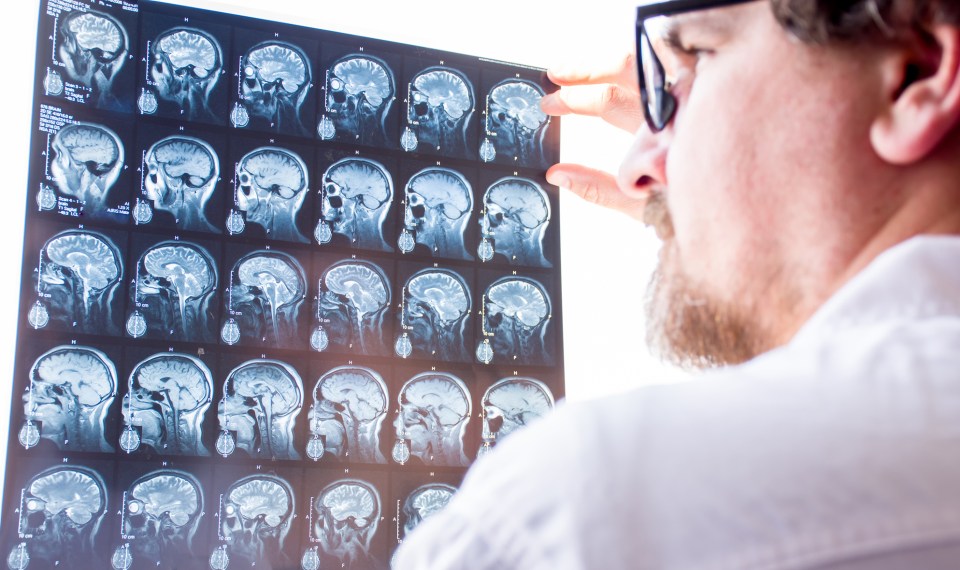After battling bronchitis for two weeks, Amy Eberting was tired, but the recent illness still couldn’t explain the exhaustion she was feeling when she stopped by to visit her boyfriend at his work while she was on the way home.
“She was going home to take it easy for a bit before the girls got off the bus from school,” said Jack Mackey, Amy’s boyfriend. “She called me slurring her speech and making no sense. I could tell something was wrong.”
Mackey called paramedics and raced home, where he found Eberting lying in a chair.
“She was saying, ‘Somebody needs to help me. Something is going on,’” Mackey recalled.
Paramedics arrived and transported her to the hospital. Doctors found a blood clot in the carotid artery on the left side of her neck, but the clot was so large that TPA, a blood thinning treatment for ischemic or thrombotic strokes, wasn’t effective. Eberting was air lifted to another hospital where a surgeon found a tear in her aorta.
Regaining her independence
The stroke left Eberting unable to speak and with weakness on her left side. It affected her right side even more severely, as she had almost no movement. With two young girls, getting back to the activities of daily life was especially important to Eberting. As a cosmetologist, she wanted to begin working toward a return to her profession, as well. She chose Kansas Rehabilitation Hospital, a joint venture of Encompass Health and Stormont Vail Health, to begin her return to independence.
“We did a lot of simulations of cooking and cleaning and worked on functional mobility so her balance was better,” said Shannon Leach, occupational therapist. “She needed to be able to maneuver in her home.”
Despite her circumstances, Eberting radiated positivity, Mackey said, and always focused on what she needed to do to get better. It’s a spirit like that that makes a therapist’s job easier, Leach said, and plays an important role in recovery.
“She wanted to learn everything she could about strokes, so she could better learn how to help herself,” Leach said. “She was constantly doing exercises in her own room. She was working so hard on a daily basis. She always has a glow about her and wanted to do anything she could to better herself.”
Eberting was able to leave Kansas Rehabilitation Hospital using only a walker for assistance, and continued outpatient therapy to regain the use of her right hand. For those who are facing similar battles, Eberting shares words of advice.
“Stay positive, because it will get better,” she said. “Somethings do not make sense at the time they’re working with you, but it will all make sense eventually. But just don’t give up.”
The content of this site is for informational purposes only and should not be taken as professional medical advice. Always seek the advice of your physician or other qualified healthcare provider with any questions you may have regarding any medical conditions or treatments.


